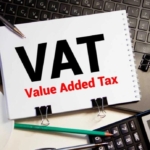
In a move described as a “Fiscal Reset,” Ghana’s 2026 Budget has triggered a fierce debate between the Ministry of Finance and the trading community.
The government proposes a radical overhaul of the consumption tax system, raising the VAT threshold and unifying rates.
The Ghana Union of Traders’ Associations (GUTA) warns that this will hike taxes “from 4% to 20% overnight,” predicting the collapse of Small and Medium Enterprises (SMEs).
But beyond the headlines, what do the numbers actually say? This analysis breaks down the facts, the math, and the impact on your business and your shopping basket.
The Big Numbers: At a Glance
– GH¢750,000: The new annual turnover threshold for charging VAT. If a business sells less than this, they do not charge VAT.
– 20%: The new standard VAT rate. This replaces the old system of 15% VAT + 2.5% NHIL + 2.5% GETFund + 1% COVID Levy.
– 0%: The new COVID-19 Health Recovery Levy rate. It has been abolished completely.
– GH¢5.7 Billion: The estimated amount returned to businesses and households due to these tax cuts and restructuring.
The Controversy: “4% to 20% Overnight”
GUTA President Joseph Obeng has argued that moving traders from the VAT Flat Rate Scheme (VFRS)—where they paid a flat 3-4% on turnover—to a standard 20% system is a “crippling” increase.
Fact Check: Is it really a tax hike?
On paper, seeing “20%” on a receipt looks much higher than “4%.” However, this comparison is misleading because it ignores how the tax is calculated.
1. The Old Way (The Hidden Cost): Under the Flat Rate Scheme (VFRS), a trader charged you 4% at the counter. But before the goods reached the shop, the trader paid roughly 22% in import taxes and levies at the port. Crucially, they could not claim this 22% back. It was a “sunk cost” that they quietly added to the price of the product before adding their profit margin.
– Real Tax Burden: ~22% (Hidden) + 4% (Visible) ≈ 26%.
2. The New Way (The Transparent Cost): Under the 2026 proposal, the trader pays 20% at the port but claims it back as an input tax credit. They then charge you 20% at the counter. Because they get their port money back, they don’t need to bury that cost in the product price.
– Real Tax Burden: 20% (Visible).
While the visible tax rate on the receipt jumps, the total tax burden on the product actually drops from an effective ~26% to 20%.
The “Missing Middle”: A Policy Gap?
The most significant finding in our research is a potential loophole created by the new thresholds.
1. The Small (Modified Taxation Scheme): Businesses with turnover up to GH¢500,000 pay a simple 3% turnover tax.
2. The Big (Standard VAT): Businesses with turnover above GH¢750,000 charge 20% VAT.
The Gap: What happens to businesses earning between GH¢500,000 and GH¢750,000? Currently, there is no clear tax instrument for this specific band. They are too big for the small-business tax but too small for VAT. Unless rectified, this creates a “tax-free zone” for consumption taxes, which could encourage businesses to artificially suppress their sales figures to stay in this sweet spot.
Impact Analysis
1. For Consumers (The Shopper)
– Standard Goods: Prices should theoretically drop or stabilize. The removal of the COVID levy and the ability for businesses to reclaim NHIL and GETFund means the “tax on tax” effect is gone.
– The Risk: If traders migrate to the 20% system but don’t lower their base prices to reflect the input tax credits they are receiving, prices will spike. Consumer vigilance is key.
2. For Small Businesses (Turnover < GH¢750k)
– The Win: You are no longer required to file complex VAT returns. You simply pay the 3% turnover tax (if under GH¢500k) or corporate tax. This reduces your administrative headache significantly.
– The Trap: You cannot issue VAT invoices. Large corporate clients who need to claim VAT refunds may stop buying from you because your receipts are not “VATable.”
3. For Medium Businesses (Turnover > GH¢750k)
– The Danger: This group faces the “Split Market” distortion GUTA warned about. A shop selling GH¢800,000 a year must charge 20% VAT. The shop next door selling GH¢700,000 charges 0% VAT.
– The Consequence: Price-sensitive customers may abandon the VAT-registered shop, creating a powerful incentive for the larger shop to under-declare sales and hide from the taxman.
Summary: Winners and Losers
1. Micro-Enterprises (Winner). Relieved of VAT compliance; simple 3% tax.
2. Large Corporations (Winner). Can now claim credits for NHIL & GETFund; lower effective tax.
3. The “Middle” Trader (At Risk). Faces price competition from exempt neighbors (the “Cliff Edge”).
4. The Consumer (Mixed). Benefits from abolished levies, but relies on traders passing on the savings.
The Bottom Line
The 2026 Budget isn’t just raising a tax; it is changing the philosophy of taxation in Ghana. It moves away from “cascading” taxes (where you pay tax on tax) to a “neutral” system.
While GUTA’s fears of a nominal rate shock are valid, the data suggests that for a compliant business, the cost of doing business will decrease.
The challenge for the government is managing the “Cliff Edge” at GH¢750,000 to prevent the market from splitting into two: the taxed and the untaxed (VAT).
About the author
Sitsofe Mensah is a Tax Policy Analyst at Henley Business School, University of Reading
- President Commissions 36.5 Million Dollars Hospital In The Tain District
- You Will Not Go Free For Killing An Hard Working MP – Akufo-Addo To MP’s Killer
- I Will Lead You To Victory – Ato Forson Assures NDC Supporters
Visit Our Social Media for More




